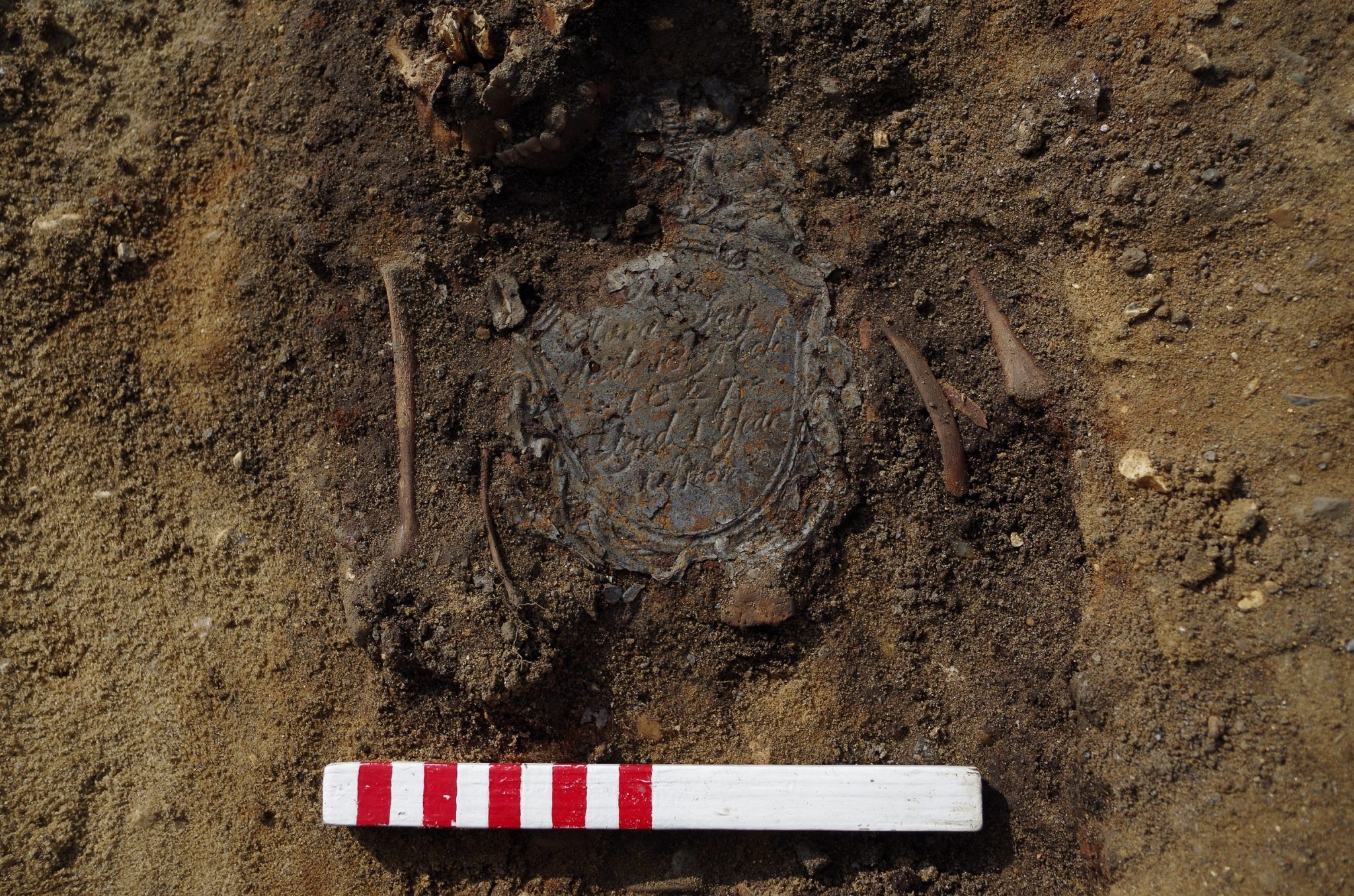Remains of first ‘modern’ Londoners reveal harshness of existence for industrial poor
Archaeological post-excavation work on skeletal remains uncovered during the excavation of part of a cemetery originally situated on the site of New Covent Garden Market in Nine Elms, has shed light on the harshness of existence for the London poor living in the area in the 1830s to 1850s, at a time of mass industrialisation and railway expansion.
Archaeologists from Wessex Archaeology excavated the site as part of modernisation work of the New Covent Garden Market by the VINCI St. Modwen joint venture in partnership with the Covent Garden Market Authority. During the archaeological excavations, the remains of nearly 100 burials were uncovered on the site of the cemetery attached to the church of St George The Martyr, which had been partially cleared in the 1960s just before New Covent Garden Market was built, as the market relocated from its original central London setting.
Kirsten Egging Dinwiddy, Senior Osteoarchaeologist at Wessex Archaeology said: “The study of these remains helps us to understand the harshness of existence for the first modern Londoners living in a rapidly transforming world. This part of what was to become the metropolis saw a particularly dramatic change from rural market gardens to a heavily industrialised and urbanised environment over just a few years, largely thanks to the construction of the nearby major railway depot.
“The surrounding assortment of noxious, dangerous and labour-intensive industries would have made for very poor working and living conditions, although great numbers of people continued to flock to the area to take advantage of work opportunities. Most of those trying to survive in and around the area would have been classed as poor or very poor, and within a few decades of the closure of the cemetery, Booth’s London Poverty Maps show nearby streets to be the realm of the very ‘lowest class, vicious and semi-criminal’.”
Three burial remains in particular offer a fascinating insight into the lives and stories of those living in the area.
- The first burial is of an older woman who, despite a lifelong chronic illness, had a strenuous occupation involving heavy use of the upper arms and shoulders. As well as the characteristic signs of congenital syphilis – a serious infection contracted whilst in the womb or soon after birth – the woman had also suffered a broken nose and the loss of a front tooth. While it is not possible to be certain of the cause of these injuries (ie, violence or accident) there is no doubt as to the nature of the wound that almost certainly led to her demise. The small puncture wound to her skull, which occurred around the time of her death, was inflicted by a thin blade, e.g., a stiletto dagger. A likely scenario is that she was attacked (probably from behind) and stabbed behind the right ear.
- The second story is of an older male, nearly six feet tall and a distinctive looking character. His completely flattened nose and a depression on his left brow indicate that he had been involved in several violent altercations, and although we cannot tell the particular circumstances, we do know that bare knuckle fighting was a popular pastime (he died before the adoption of Queensbury Rules that required boxing gloves). He was also badly injured in an accident, probably a fall, that broke bones in his spine and hip. To accompany his boxer’s nose, he would have had a less-than-winning smile. Both front teeth had been lost, probably due to the enormous and very visible cyst that had formed on the roof of his mouth. He also suffered from syphilis, though probably the venereal form. After his death he had been subject to a cranial autopsy, a procedure that was becoming increasingly more common during the mid-19th century, the start of the ‘golden age’ for autopsy.
- The final story is the most poignant. The only remains for which a name is known were those of Jane Clara Jay, who died on the 18th March 1847, just short of her second birthday. She was the daughter of Sarah Jay and her labourer husband George James Jay of Nine Elms, Battersea and was a little sister. Although Jane’s remains have signs of some underlying malnutrition, there is no evidence as to the cause of her death. Losing children at such a young age would not have been unusual in mid-19th century London; of the 95 excavated burial remains, 40% of them are of children under the age of 12.
Tim Seddon, Property Director South East, St. Modwen said: “This has been a fascinating insight into the history of the site. We are always keen to respect the heritage whilst delivering a lasting legacy in the next chapter of this important London market.”





